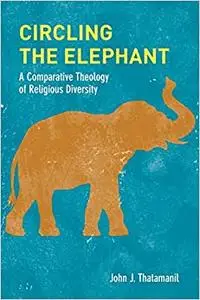, "Circling the Elephant: A Comparative Theology of Religious Diversity "
English | ISBN: 0823287734 | 2020 | 320 pages | PDF | 3 MB
English | ISBN: 0823287734 | 2020 | 320 pages | PDF | 3 MB
Christian theologians have for some decades affirmed that they have no monopoly on encounters with God or ultimate reality and that other religions also have access to religious truth and transformation. If that is the case, the time has come for Christians not only to learn about but also from their religious neighbors. Circling the Elephant affirms that the best way to be truly open to the mystery of the infinite is to move away from defensive postures of religious isolationism and self-sufficiency and to move, in vulnerability and openness, toward the mystery of the neighbor.
Employing the ancient Indian allegory of the elephant and blind(folded) men, John J. Thatamanil argues for the integration of three often-separated theological projects: theologies of religious diversity (the work of accounting for why there are so many different understandings of the elephant), comparative theology (the venture of walking over to a different side of the elephant), and constructive theology (the endeavor of re-describing the elephant in light of the other two tasks).
also offers an analysis of why we have fallen short in the past. Interreligious learning has been obstructed by problematic ideas about “religion” and “religions,” Thatamanil argues, while also pointing out the troubling resonances between reified notions of “religion” and “race.” He contests these notions and offers a new theory of the religious that makes interreligious learning both possible and desirable.
Christians have much to learn from their religious neighbors, even about such central features of Christian theology as Christ and the Trinity. This book envisions religious diversity as a promise, not a problem, and proposes a new theology of religious diversity that opens the door to robust interreligious learning and Christian transformation through encountering the other.
Read more



